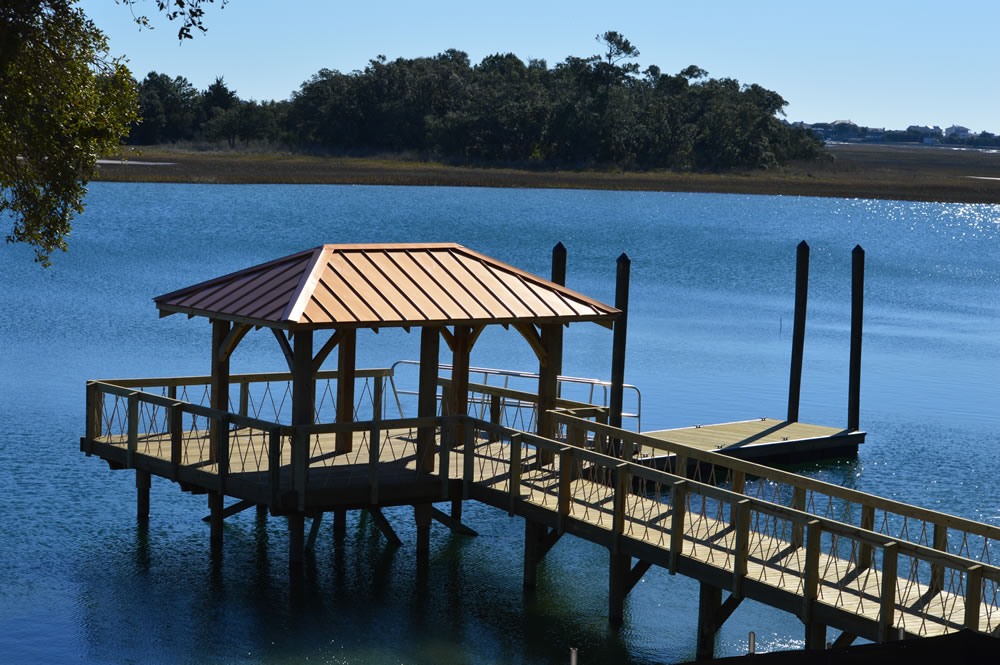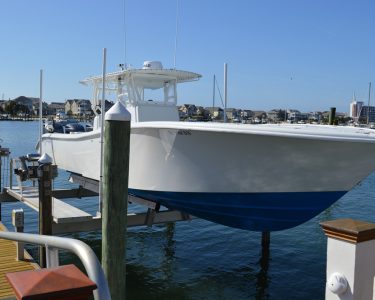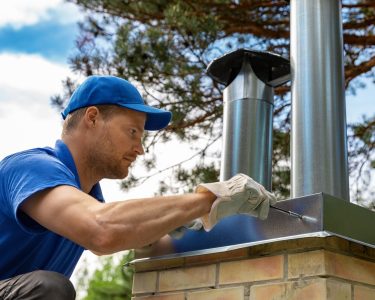Storm season in Wilmington, NC can be devastating, so marine construction projects in the area need thorough preparation for it. The coastal environment brings challenges that require proactive steps to protect your site and valuable resources, as well as keep your project on schedule. Wilmington’s location along the Atlantic brings a lot of risks like hurricanes, tropical storms, and sudden weather changes. This guide covers the strategies you need to prepare your marine construction site during storm season, focusing on flood resilience, equipment protection, and erosion control.
Wilmington’s Storm Season and Its Impact on Marine Construction
Wilmington, NC, and other coastal areas are really threatened by seasonal weather, particularly during the Atlantic hurricane season, which peaks from June to November. The area saw significant storm surges, high winds, and flooding from hurricanes and tropical storms in the past few years. Understanding these risks and having plans for them are essential parts of every marine construction project in the region.
Coastal construction sites experience a lot of shoreline erosion, rising sediment, and stress from storm surges. Anticipating these conditions lets you come up with resilient site preparation practices that help keep your project stable against Wilmington’s intense storm season.
Conducting a Comprehensive Risk Assessment for Your Marine Construction Site
Do a thorough risk assessment to identify the specific storm threats to your site before taking steps to protect it. This way, you identify site vulnerabilities, guide resource allocation, and establish a detailed emergency plan. Key factors to assess include:
- Location and Elevation: Sites in low-lying or wetland areas face a higher risk of flooding. More elevated locations won’t see as much flooding but may still encounter wind-related damage.
- Soil and Sediment Stability: Wilmington’s coastal soil composition impacts its stability during heavy rainfall and flooding. Knowing the soil type and erosion risks will help you plan effective erosion control measures.
- Structural Durability: Evaluate bulkheads, docks, and retaining walls to verify they’ll be able to resist the storm surge. Reinforcing these structures in advance can prevent water intrusion and sediment displacement, protecting your site and the surrounding area.
By understanding your site’s specific vulnerabilities, you can take the important measures that help protect your marine construction project in Wilmington, NC, during storm season.
Protecting Equipment and Materials from Storm Damage
Marine construction sites house high-value machinery and materials that are particularly vulnerable to extreme weather. Taking steps to protect them will prevent damage and minimize delays.
- Relocate and Anchor Equipment: Move machinery and tools to secure, elevated locations inland to protect them from floodwater. Anchoring any heavy equipment that can’t be moved adds another layer of protection, reducing the risk of equipment being displaced by floodwaters or wind.
- Waterproofing and Elevating Materials: Store timber, piping, and concrete aggregates on elevated platforms with water-resistant tarps. For materials that can’t be relocated, use storm-resistant barriers to shield them from water damage.
- Employ Marine-Grade Anchoring Systems: For structures that remain on-site, choose marine-grade anchors and moorings that withstand strong currents and increased water levels. Corrosion-resistant hardware designed for Wilmington’s coastal environment is durable enough to withstand the storm conditions.
Erosion Control and Shoreline Reinforcement Techniques
Shoreline erosion is a big challenge in marine construction, especially during Wilmington’s storm season, when high tides and waves can displace a lot of the sediment. Here are some erosion control practices that can protect your site and nearby ecosystems:
- Install Temporary Silt Fencing: Silt fences are effective at reducing erosion by filtering sediment and debris from runoff. Strategically placed barriers help protect local water bodies from contamination during heavy rains.
- Reinforce Shorelines with Riprap or Gabions: Riprap (rock armoring) and gabions (rock-filled cages) provide additional shoreline support, reducing erosion during storm surges and high tides. These reinforcements act like barriers, dispersing the energy from waves and preserving the shoreline.
- Use Native Vegetation for Soil Stability: Native grasses and shrubs can naturally anchor soil and reduce erosion along shorelines. Adding vegetation around your site makes it better at resisting storms while supporting local ecosystems.
Developing an Emergency Storm Response Plan
Any Wilmington marine construction project needs an emergency response plan, especially during storm season. A clear plan keeps workers safe, equipment secure, and the environment protected. A comprehensive emergency plan should include:
- Evacuation and Safety Protocols: Train team members on evacuation routes, emergency contacts, and shelter locations. Clear communication channels help reduce confusion and speed up response times in the event of an evacuation.
- Backup Power and Communication Systems: Power outages and communication disruptions are common during storms. Backup generators and satellite communication tools let you keep operating and maintain communication between team members, especially if your site is near or on the water.
- Post-Storm Inspection Procedures: Establish a checklist for post-storm inspections to identify any damage, erosion, or safety risks. Include assessments for structural integrity, equipment conditions, and environmental impact to make sure the site is safe before resuming work.
Environmental Considerations During Storm Preparation
In Wilmington, NC, marine construction needs to take environmental impacts into account, particularly during storm season. An environmentally responsible approach to storm preparation reduces ecological harm and keeps projects in compliance with regulations.
- Contain Potential Pollutants: Identify and securely store substances like oils, fuels, or chemicals that could pollute nearby water bodies. Containment barriers can prevent pollutants from entering waterways during flooding.
- Monitor Sediment Control Systems: Storms can disturb sediment at marine construction sites, increasing the risk of contamination. Temporary sediment barriers and regular water quality monitoring help reduce environmental impact and meet regulatory standards.
- Protect Marine Life and Coastal Habitats: Wilmington’s coastline is home to various marine species and ecosystems sensitive to construction activities. Installing protective barriers or relocating endangered species from the area before a storm can mitigate damage to fragile habitats.
Adhering to Local Regulations and Standards
Marine construction projects in Wilmington are subject to specific regulations to protect the public safety and the environment, especially during storm season. Compliance involves understanding local building codes, environmental standards, and storm-preparation guidelines. Certain permits may be necessary for certain erosion control methods, and chemical storage regulations often apply to marine construction sites.
Consulting a marine construction expert familiar with Wilmington’s regulations can streamline the compliance process and aid in faster approval processes and smoother inspections post-storm.
Conducting Routine Maintenance and Upgrades
Effective storm preparation requires regular maintenance and updates to keep your site resistant. Routine inspections, particularly as storm season nears, show you vulnerabilities and potential areas for improvement.
- Routine Structural Inspections: Periodically assess bulkheads, docks, and shoreline reinforcements to confirm they remain intact and effective. Check erosion control measures, sediment barriers, and flood prevention systems for any signs of wear.
- Upgrade with New Technology and Materials: Marine construction technology and materials advance regularly. Weather-resistant materials, corrosion-proof equipment, and advanced monitoring systems can boost your site’s resilience to storm damage.
Preparing for the Future
Preparation is necessary for handling Wilmington’s storm season safely and successfully. By following these steps—performing risk assessments, securing assets, reinforcing erosion control, implementing emergency protocols, practicing environmental responsibility, and adhering to local regulations—you’ll be ready for the challenges that Wilmington’s demanding coastal environment poses. A proactive approach to marine construction in Wilmington, NC, fortifies your investment and positions your site to endure even the most severe storms.





